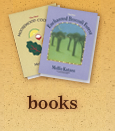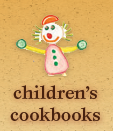Yield: About 1 apple per serving, maybe more
 Roasting apples, which is basically a
high-temperature baking process with no added liquid, gives them a
wonderful, deepened flavor and a great chewy texture. You can serve
Roasted Apples as a snack or a dessert, with or without a platter
of cheeses. You can also gussy them up with some Balsamic Drizzle
(recipe follows). It's nice to serve something this light and
simple during the holiday season (or any time, for that
matter).
Roasting apples, which is basically a
high-temperature baking process with no added liquid, gives them a
wonderful, deepened flavor and a great chewy texture. You can serve
Roasted Apples as a snack or a dessert, with or without a platter
of cheeses. You can also gussy them up with some Balsamic Drizzle
(recipe follows). It's nice to serve something this light and
simple during the holiday season (or any time, for that
matter).
This is more a method than it is an exact recipe. Roast any amount of apples, and use any kind except red delicious, which are OK for eating but don't cook well. I like to use tart varieties, because they become sweeter during the roasting process. The inner moisture evaporates and natural sugars caramelize and intensify.
NOTE: You can make the Balsamic Drizzle several days ahead or while the apples roast. You can also skip it, as the apples are delicious plain as well.
Apples (any number, and any type but red delicious)
- Preheat the oven to 425°F.
- Spray a ceramic baking dish with nonstick spray.
- Core the apples, and cut them into fairly large chunks, leaving the peel on. (If the fruit is peeled, it tends to fall apart.)
- Place the chunks either peel side-down or on their sides in the baking dish. Spacing is unimportant, since the fruit shrinks as it roasts. Just make sure the pieces are in a single layer. Put the dish into the preheated oven for about 30 minutes or until the apples are done just the way you like them. This is a very subjective process .
- When the fruit feels tender to the touch (or a fork slides easily into the flesh) remove the dish from the oven, and transfer the apples to a plate or a platter with a rim.
DEGLAZING
At this point, you can deglaze the pan with a little apple juice (about 1/4 cup). To deglaze, just add the juice to the dish after the fruit has been removed, and scrape and swish it around with a wooden spoon to catch all the glazed fruit tidbits that have stuck during the roasting process. When you've scraped up all the bits and stirred it well in the pan, transfer to a small bowl (straining optional) or pour it directly over the roasted fruit.
Preparation time: 30 minutes (1 minute of work)
Yield: 1/3 cup (easily multiplied)
- You don't need to use an expensive brand of vinegar for this recipe. In fact, the ordinary, more moderately priced supermarket varieties work the best.
- Store Balsamic Drizzle in a covered container at room temperature. Theoretically it will keep forever, but undoubtedly you will use it up sooner than that. If it does sit around, though, it tends to harden, and that is easily fixed. Simply zap it for about 15 seconds in a microwave oven, and it will soften up again.
- Place the vinegar in a shallow saucepan and heat to boiling. (You might want to open your kitchen windows„this gives off strong fumes!)
- Turn the heat way down, and simmer uncovered for about 30 minutes, or until the vinegar is reduced in volume by about two-thirds.
- Transfer to a bowl, cover tightly, and store indefinitely at room temperature.






